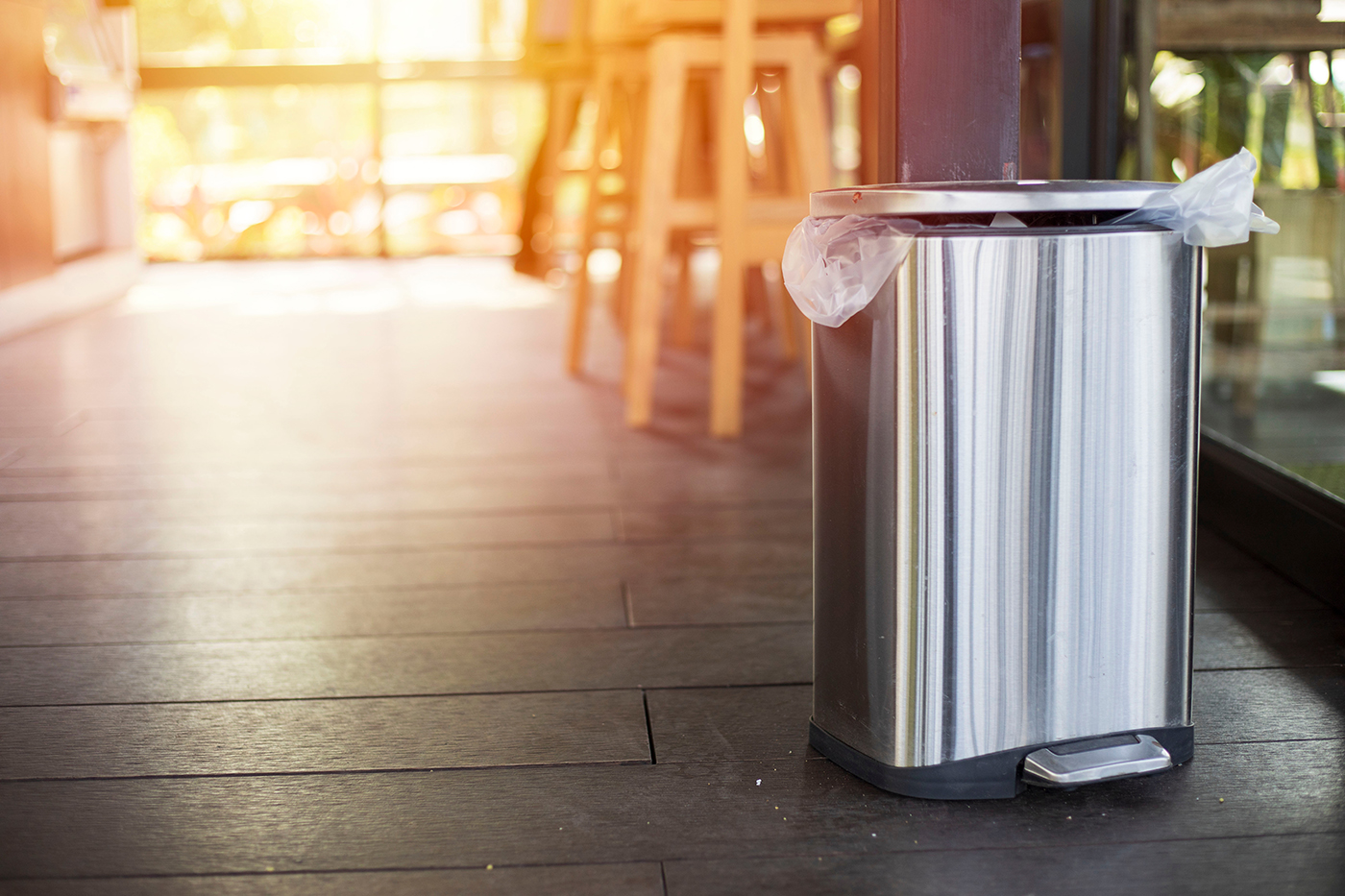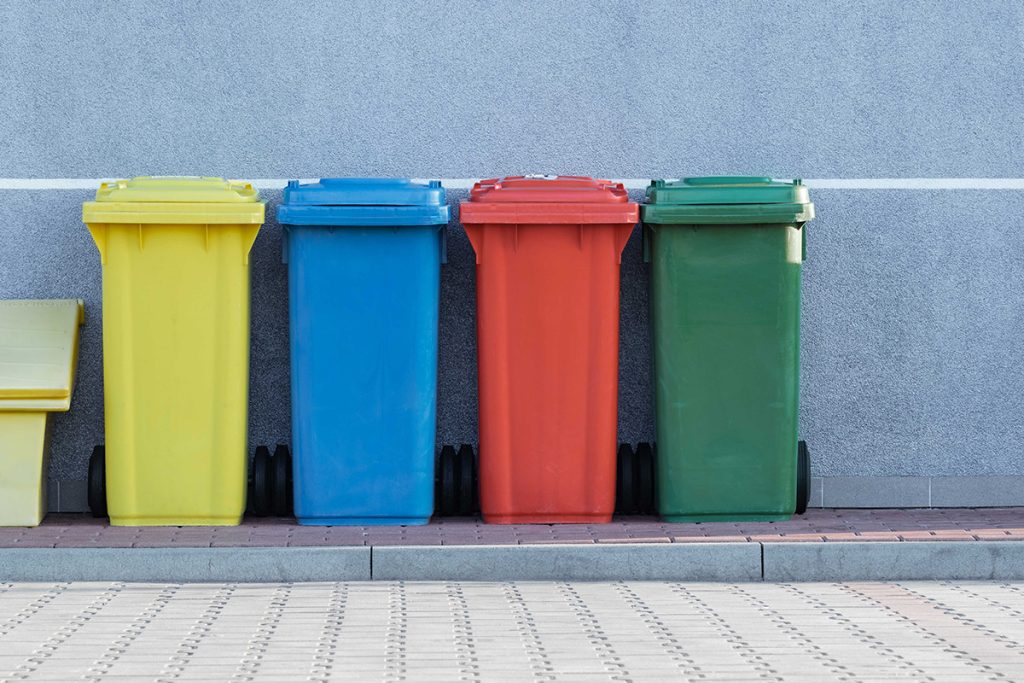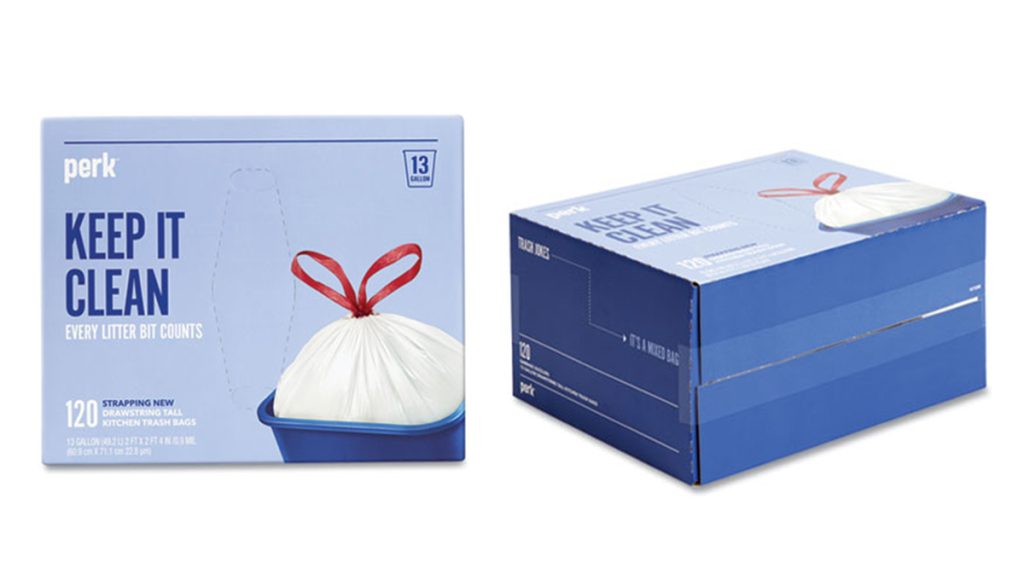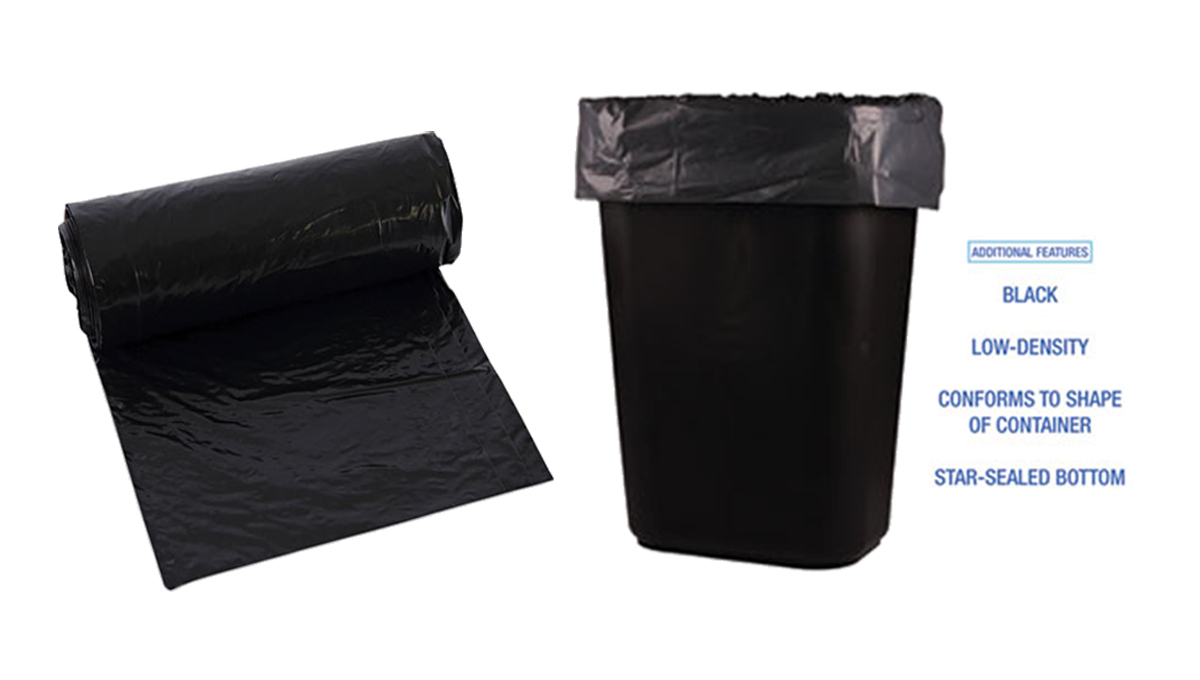
Do you find yourself wondering why your garbage bag always leaks or tears? Are you double bagging your trash because you’re unsure which bag you should be using? It all comes down to the density, size, and seal of your garbage bag.
Finding the best bag for your trash doesn’t have to be confusing. We’ll walk you through everything you need to know to ensure you’re purchasing the best liners for your receptacles. From microns to mils and the difference between high and low density trash bags, you will be ready to get what you need.
Low Density versus High Density
There are several key differences between low and high density bags. They are used for vastly different things, have varying weight allowances, and are measured differently. Low density trash bags are more commonly used than high density bags, but only in specific ways. Let us explain.
Low Density Trash Bags
Low density trash bags, or linear low-density polyethylene (LLDPE) trash bags, are made from high quality resins. These allow the bags to be thicker, flexible, and more resistant to tears or punctures. LLDPE bags are incredibly durable and great for outdoor trash cans, bars, demolition & construction debris, kitchen trash, and more. They are ideal for trash that contains:
- Cardboard
- Wood
- Metal
- Sharp Food Waste
- Glass
- Irregularly Shaped or Jagged Items

High Density Trash Bags
While LLDPE are more commonly found in receptacles, you will find high density polyethylene trash bags (HDPE) widely available, as well. These are produced from high molecular density resins in tightly packed straight molecules. They are directionally strong because of those straight molecules only facing one direction. However, they are thinner and therefore not as puncture resistant. This makes them ideal for carrying soft, yet heavy loads that do not have rough edges, like:
- Dirt
- Towels
- Shredded Paper
- Restroom Waste
- Office Waste
- Smooth, Heavy Objects
- Clothing
High density bags are measured in microns, which is 1/1000 of a millimeter. Generally, high density bags vary from 5 to 24 microns in width, also dependent upon the use of the bag.
How To Tell Them Apart
While both high and low density trash bags have their similarities – they’re both used for trash, after all, there are two key differences to help you determine the density; all you must do is touch them and listen to how they sound. HDPE will be stiffer and sound “crustier”. LLDPE trash bags are quieter and smoother to the touch.
Seals
The bottom of the bag is crucial to both how it fits into the receptacle and the ability to prevent leaks. There are three distinct types of seals, all useful for specific kinds of garbage disposal.
Flat Seal
Star Seal
How to Identify What You Need
Proper fit and size are necessary when choosing a trash can bag or liner. You want to ensue you’re not wasting precious plastic, so be sure to measure your trash can to find out which gallon size and length bags are best for you.
Remember the three things you need to consider when purchasing your bags:
- Density
- Seal
- Size







